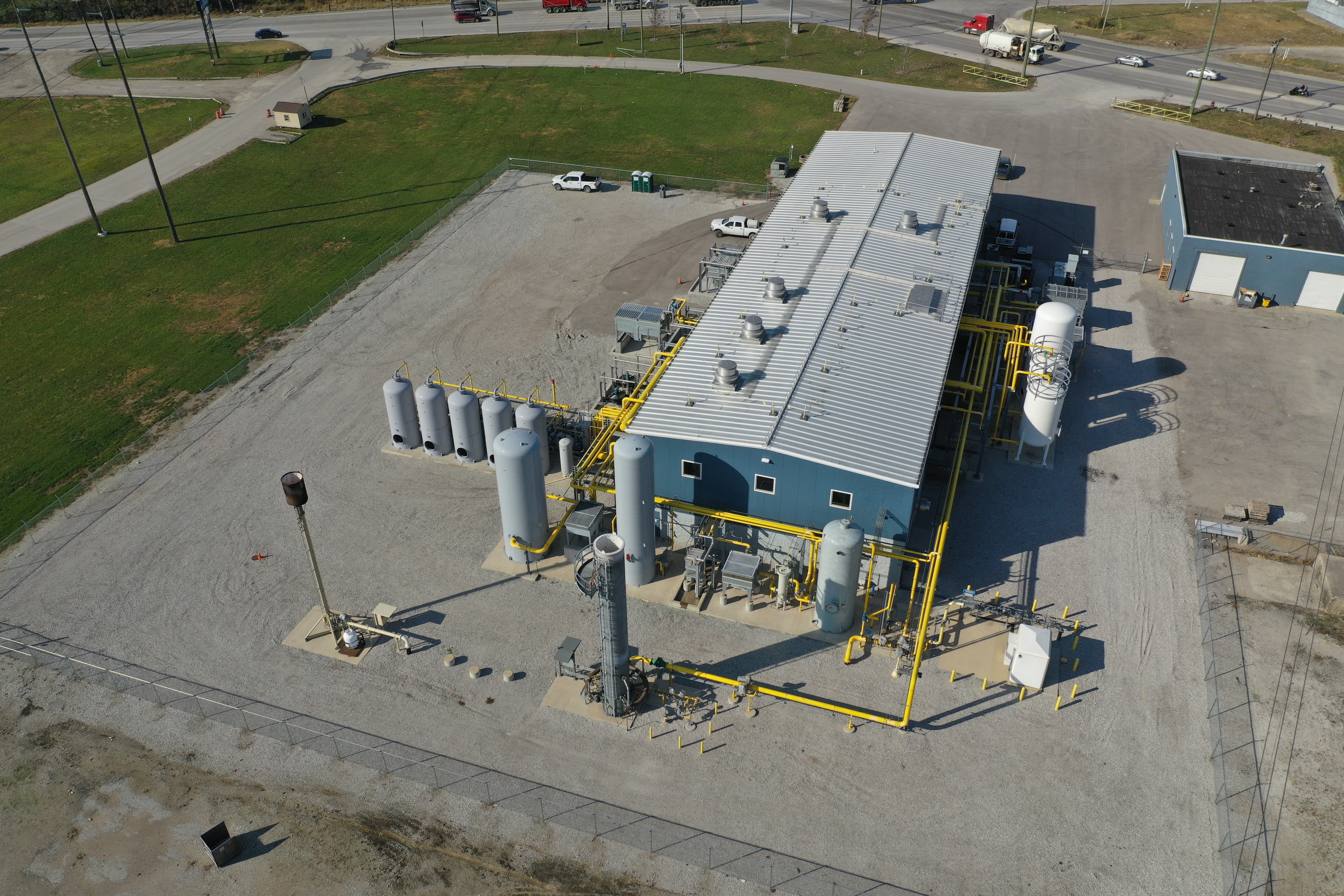Landfill owners have multiple options when determining how to reduce emissions and maximize the utilization of their biogas. Landfill gas can be captured, upgraded and used to generate renewable natural gas (RNG), renewable electricity or leveraged directly as a medium-Btu fuel for heating and thermal applications.
Landfill gas is typically composed of approximately 45-60% methane, approximately 50% carbon dioxide and small amounts of non-methane organic compounds.[EPA] By capturing the landfill gas and generating renewable energy with it, landfill owners can advance their sustainability efforts, enhance economics and improve compliance. Organizations across industries such as utilities, trucking, automotive, manufacturing, education and many others are increasingly procuring RNG to accelerate their energy transition.
To produce RNG, landfill gas needs to be captured and upgraded to comply with pipeline specifications. To meet pipeline specifications, nearly all moisture, carbon dioxide, nitrogen, hydrogen sulfide, siloxane and other volatile organic compounds must be removed from the landfill gas. A variety of processes and technologies exist and deliver varying benefits. The optimal solution will depend on numerous factors including equipment costs, operating expenses and methane recovery levels.
Methods to Upgrade Landfill Gas to Renewable Natural Gas
Water Scrubbing: Also referred to as water wash, water scrubbing is the process of compressing landfill gas and removing impurities by dilution in water that fall from the top of the vessel in the opposite direction of the gas flow. Methane has less dilution capability than carbon dioxide and pressure is set at a point where only carbon dioxide is diluted, stripping carbon dioxide from the landfill gas and resulting in biogas with higher methane levels.
Solvent Scrubbing: Solvent scrubbing involves the use of a chemical solvent such as amine or a physical solvent such as Selexol to remove carbon dioxide and hydrogen sulfide from biogas. Carbon dioxide adsorbs into the solvent increasing methane levels of the biogas.
Pressure Swing Adsorption (PSA): The PSA process utilizes vapor-phase activated carbon and a molecular sieve. There are numerous methodologies, but commonly landfill gas is compressed, undergoes moisture and hydrogen sulfide removal, then passes through a media to capture carbon dioxide and nitrogen. As the molecular size of methane is smaller, it is able to pass through the media resulting in the biogas being upgraded into RNG. An additional method attaches nitrogen and methane, allowing the nitrogen to pass through, then extracts the methane by depressurizing and pulling a vacuum on the vessel.
Membrane Systems: Similar to the PSA methodology, membrane systems employ initial compression, moisture removal and hydrogen sulfide removal steps for the landfill gas but then uses activated carbon and membranes to remove the volatile organic compounds and carbon dioxide.
Catalytic Reaction: To remove oxygen from the landfill gas, it can be heated and passed over a catalyst bed where the oxygen reacts with some methane to create carbon dioxide and water. Afterwards, moisture is removed from the biogas, typically using a desiccant dryer or temperature swing adsorption process.
Cryogenic Distillation: Cryogenic distillation separates oxygen and nitrogen from landfill gas by liquefying the gas at very low temperatures. With a higher boiling point, methane will condense before nitrogen and oxygen, allowing it to separate and enable a higher methane recovery rate.
Partnering with an RNG Developer
As a vertically-integrated RNG developer, we provide landfill owners a simplified experience by managing the process end-to-end. How an RNG plant is engineered, built and operated, as well as the technologies it employs, can impact the overall performance and value that can be generated. With additional considerations such as the equipment’s physical footprint, noise levels, air permitting and many other variables, developing an RNG project has many complexities. Connect with us to learn how RNG can help you start reducing emissions and maximize value from your landfill.

